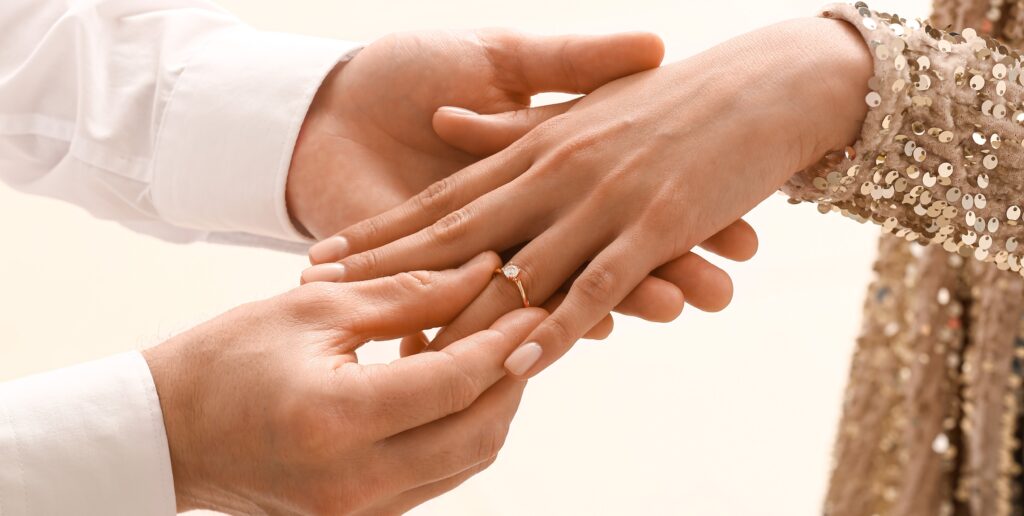
In the days of Ancient Greece, the tradition of gifting your beloved a ring was born. Ancient Egyptians, believing that the circle was the shape of eternity, gifted rings to their lovers as a symbol of everlasting love and obedience. The Ancient Romans adopted the tradition and legitimized it even more, as the act of marriage became an official part the Roman legal system. Roman women wore rings made of bone, flint, copper, iron, and gold, with small keys attached, representing the husband’s ownership. The act of wearing the ring also represented love and obedience to one another. In addition, the ring was to be worn on the fourth finger of the left hand, as mythology claimed that the finger contained the vena amoris (the vein of love) and was connected directly to the heart. Anatomically proven false, the romantic tradition carries on.
Later, as women were med, they began to wear gold rings when outside of the house in public and would switch to iron rings when in the comfort of their own home. It is said that iron represented strength and resilience whereas gold was used moreso to flaunt and impress. This gave birth to the appeal and aesthetic necessity that the engagement ring now has.
So, when did diamonds come into the mix? The introduction of the diamond ring is credited to Archduke Maximillian the 1st of Austria, who proposed to Mary Burgundy in 1477 with a ring including long cuts of diamonds in the shape of an M. He is credited to have coined the first ever diamond engagement ring!
As history progressed, the popularity of diamonds in the engagement ring industry bloomed when diamonds were discovered in the Kimberly region of South Africa. The land was highly saught after and fought over, and those who were successful quickly distributed and sold the stones. The company DeBeers, which led the diamond trade industry, coined the campaign “A Diamond is Forever” in 1947 and began to market the everlasting diamond engagement ring all over the world — immortalising the tradition we carry to this day, which dates back all the way to Ancient Egypt.

